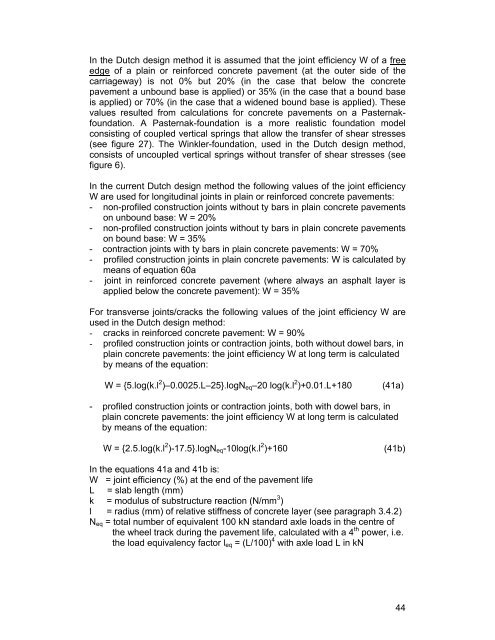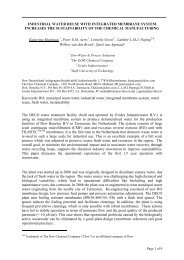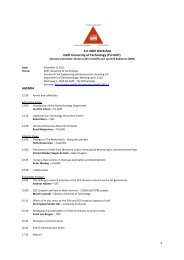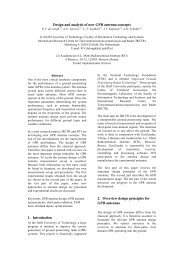CT4860 STRUCTURAL DESIGN OF PAVEMENTS
CT4860 STRUCTURAL DESIGN OF PAVEMENTS
CT4860 STRUCTURAL DESIGN OF PAVEMENTS
You also want an ePaper? Increase the reach of your titles
YUMPU automatically turns print PDFs into web optimized ePapers that Google loves.
In the Dutch design method it is assumed that the joint efficiency W of a free<br />
edge of a plain or reinforced concrete pavement (at the outer side of the<br />
carriageway) is not 0% but 20% (in the case that below the concrete<br />
pavement a unbound base is applied) or 35% (in the case that a bound base<br />
is applied) or 70% (in the case that a widened bound base is applied). These<br />
values resulted from calculations for concrete pavements on a Pasternakfoundation.<br />
A Pasternak-foundation is a more realistic foundation model<br />
consisting of coupled vertical springs that allow the transfer of shear stresses<br />
(see figure 27). The Winkler-foundation, used in the Dutch design method,<br />
consists of uncoupled vertical springs without transfer of shear stresses (see<br />
figure 6).<br />
In the current Dutch design method the following values of the joint efficiency<br />
W are used for longitudinal joints in plain or reinforced concrete pavements:<br />
- non-profiled construction joints without ty bars in plain concrete pavements<br />
on unbound base: W = 20%<br />
- non-profiled construction joints without ty bars in plain concrete pavements<br />
on bound base: W = 35%<br />
- contraction joints with ty bars in plain concrete pavements: W = 70%<br />
- profiled construction joints in plain concrete pavements: W is calculated by<br />
means of equation 60a<br />
- joint in reinforced concrete pavement (where always an asphalt layer is<br />
applied below the concrete pavement): W = 35%<br />
For transverse joints/cracks the following values of the joint efficiency W are<br />
used in the Dutch design method:<br />
- cracks in reinforced concrete pavement: W = 90%<br />
- profiled construction joints or contraction joints, both without dowel bars, in<br />
plain concrete pavements: the joint efficiency W at long term is calculated<br />
by means of the equation:<br />
W = {5.log(k.l 2 )–0.0025.L–25}.logNeq–20 log(k.l 2 )+0.01.L+180 (41a)<br />
- profiled construction joints or contraction joints, both with dowel bars, in<br />
plain concrete pavements: the joint efficiency W at long term is calculated<br />
by means of the equation:<br />
W = {2.5.log(k.l 2 )-17.5}.logNeq-10log(k.l 2 )+160 (41b)<br />
In the equations 41a and 41b is:<br />
W = joint efficiency (%) at the end of the pavement life<br />
L = slab length (mm)<br />
k = modulus of substructure reaction (N/mm 3 )<br />
l = radius (mm) of relative stiffness of concrete layer (see paragraph 3.4.2)<br />
Neq = total number of equivalent 100 kN standard axle loads in the centre of<br />
the wheel track during the pavement life, calculated with a 4 th power, i.e.<br />
the load equivalency factor leq = (L/100) 4 with axle load L in kN<br />
44











